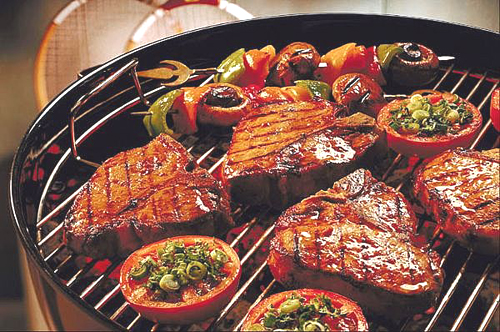
From the June 1, 2009 National Beef Cattlemen’s Association e-newsletter:
“In the last quarter of 2008, U.S. beef, pork and poultry production were all below a year ago as the livestock and poultry industries responded to financial losses. Those losses were largely due to surging costs of production, especially feedstuff costs. On a calendar year basis, that decline as well as larger exports and below year ago imports, caused U.S. per capita red meat and poultry consumption on a retail weight basis in 2008 to be the smallest since 2001. Looking ahead, per capita U.S. consumption of red meat and poultry is forecast to post large year-to-year declines again in 2009 and 2010.
“In 2008, estimated total red meat and poultry consumption (retail weight basis) was 216.1 pounds per person compared to an average range of 220 to 222 pounds per person over the prior five years. Contraction in the cattle, hog and poultry industries last year and in 2009, translates into further declines in the number of slaughter cattle, hogs and birds available this year, therefore total per capita consumption will be down again in 2009. Current forecasts for 2009 suggest total per capita consumption (retail weight basis) will be about 210.8 pounds per person, the lowest amount since 1997. Of note, per capita consumption of beef and pork are forecast to be about even to slightly below last year at 62.7 and 46.4 pounds per person, respectively; however, per capita consumption of broiler meat is forecast to decline to 79 pounds (retail weight), the smallest since 2001.
“Looking ahead, for 2010, the estimated U.S. per capita total red meat and poultry consumption is forecast at 207.4 pounds (retail weight basis), mostly due to lower per capita beef and pork supplies. If realized, per capita red meat and poultry consumption would be the lowest since the early 1990’s. Of note, per capita consumption could decline further in 2009 and 2010 if the livestock and poultry producers face another surge in feedstuff costs.”
